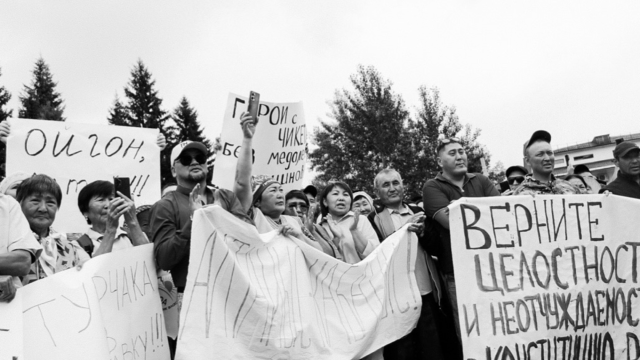The contents of Russians' refrigerators are of interest not only to food producers. They also reveal changes taking place in society.
For example, statistics on food consumption by different social groups show that poorer Russians have started eating far better over the past 10 years, leaping forward in the quality of their diets. But the rich have shown little change in their eating habits. By nutritional standards, their diet was miserable in the past and continues to be so. If you compare the diets of the poor and rich by their actual content, not according to the price of their food, then the eating habits of the two groups vary little. This proves that personal income is not the only factor influencing what people eat.
Food consumption among the poorest Russians will soon reach the level of those who are better off, with the "poorest" defined as those earning from $2 to $10 per day, according to Svetlana Misikhina, co-author of the report "Farewell to Poverty,". In 2000, people in that group consumed an average of 1,525 calories per day. They now ingest 2,100 calories. The wide gap that once existed between poor and rich Russians in the consumption of protein, vegetables, fruits and berries has been rapidly shrinking over the past 10 years.
And what about wealthy citizens? They continue to eat bread and fried potatoes now just as they have been doing for the past 10 years. Their eating habits have not changed, according to the State Statistics Service. Both the poorest and the richest Russians have started eating more unhealthy fats and carbohydrates in equal proportions, and both groups still fail to eat enough protein, fruit and berries. The only differences between the groups are in the price and quality of the food they buy and the amount of their income spent on food. The poorest spend 46 percent of their earnings to feed themselves, while the richest spend only 18 percent.
It turns out that the unhealthy diet of many Russians has less to do with a shortage of cash and much more to do with a shortage of knowledge on nutrition. A similar study conducted in Germany in 2010 found that families with low incomes but high levels of education ate much better than wealthy families that were less educated.
This comment appeared as an editorial in Vedomosti.
A Message from The Moscow Times:
Dear readers,
We are facing unprecedented challenges. Russia's Prosecutor General's Office has designated The Moscow Times as an "undesirable" organization, criminalizing our work and putting our staff at risk of prosecution. This follows our earlier unjust labeling as a "foreign agent."
These actions are direct attempts to silence independent journalism in Russia. The authorities claim our work "discredits the decisions of the Russian leadership." We see things differently: we strive to provide accurate, unbiased reporting on Russia.
We, the journalists of The Moscow Times, refuse to be silenced. But to continue our work, we need your help.
Your support, no matter how small, makes a world of difference. If you can, please support us monthly starting from just $2. It's quick to set up, and every contribution makes a significant impact.
By supporting The Moscow Times, you're defending open, independent journalism in the face of repression. Thank you for standing with us.
Remind me later.





